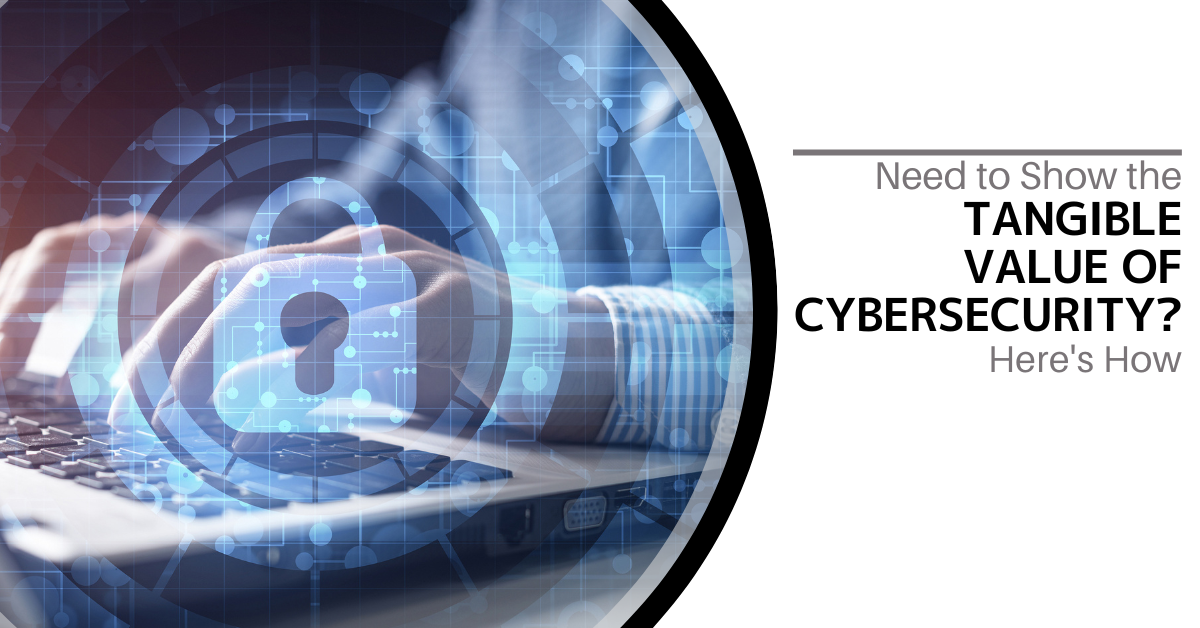
The Tangible Value of Cybersecurity
You cannot overstate the importance of cybersecurity, especially in an era dominated by digital advancements. Businesses and organizations are increasingly reliant on technology to drive operations. These make them more susceptible to cyber threats, 66% of small businesses are concerned about cybersecurity risk. Forty-seven percent lack the understanding to protect themselves. These leave them vulnerable to the high cost of an attack.
Conveying the tangible value of cybersecurity initiatives to decision-makers can be challenging. The need for protection is clear, but executives want raw data to back up spending.
We will explore ways to show the benefits of cybersecurity measures effectively. These can help you make the case for effective measures at your company. As well as help you understand how your investments return value.
How to Show the Monetary Benefits of Cybersecurity Measures
Why does demonstrating the monetary value of digital security measures pose a challenge? The benefits of cybersecurity are often indirect and preventive. These differ from tangible assets with direct revenue-generating capabilities.
Investments in robust cybersecurity protocols and technologies are akin to insurance policies. They aim to mitigate potential risks rather than generate immediate financial returns. Quantifying the monetary value of avoided breaches or data loss can be elusive. These potential costs are hypothetical. They are also contingent on the success of the cybersecurity measures in place.
Additionally, success is determined by incidents that do not occur. They complicate efforts to attribute a clear monetary value. As a result, companies grapple with finding exact metrics. Ones that effectively communicate this economic impact.
Below are several ways to translate successful cybersecurity measures into tangible value.
1. Quantifying Risk Reduction
What is one of the most compelling ways to showcase the value of cybersecurity? It is by quantifying the risk reduction. Cyber risk quantification measures the cyber risk reduction of cyber programs over time by recalculating cyber risk when additional cybersecurity measures are carried out. It compares the target and the actual risk reduction to measure progress. Companies design cyber security initiatives to mitigate potential threats. By analyzing historical data and threat intelligence, organizations can provide concrete evidence of how these measures have reduced the likelihood and impact of incidents.
2. Measuring Incident Response Time
Incident response refers to the overall cyber security process for responding to cyberattacks and data breaches, including all techniques attempted to contain the threat, reduce damage, and mitigate consequences. Responding swiftly to a cyber incident is crucial in minimizing damage. Metrics that highlight incident response time can serve as a key- indicator. These can illustrate the effectiveness of cyber security efforts.
It’s also possible to estimate downtime costs. And then correlate those to the reduction in the time it takes to detect and respond to a security incident. These demonstrate potential savings based on faster response.
The average cost of downtime by Pingdom is as follows:
· Up to $427 per minute (Small Business)
· Up to $16,000 per minute (Large Business)
The National Institute of Standards and Technology (NIST) recognizes four lifecycle phases that companies work through once a data breach or cybercriminal attack is detected. These phases include:
3. Financial Impact Analysis
Cybersecurity incidents can have significant financial implications. Businesses can quantify the potential losses averted due to cybersecurity measures. Businesses do this by conducting a thorough financial impact analysis.
These can include costs associated with:
· Downtime
· Data breaches
· Legal consequences
· Reputational damage
4. Monitoring Compliance Metrics
Many industries have regulatory requirements for data protection and cybersecurity. Demonstrating compliance with these regulations avoids legal consequences. It also showcases a commitment to safeguarding sensitive information. Track and report on compliance metrics can be another tangible way to exhibit the value of cybersecurity initiatives.
5. Employee Training Effectiveness
Human error remains a significant factor in cyber security incidents. Use metrics related to the effectiveness of employee training programs. These can shed light on how well the company has prepared its workforce. To recognize and respond to potential threats. A well-trained workforce contributes directly to the company’s cyber security defenses.
Cybersecurity training should include everything employees need to know to protect company data. These can include topics such as:
- Password security protocols.
- Data encryption methods.
- Network security best practices.
- Mobile device security.
- Phishing and social engineering tactics.
- Data privacy laws, policies, and procedures.
- Risk assessment and management strategies.
- Different types of malware and virus information.
- Safe web browsing and email habits.
- Disaster recovery and business continuity plans.
6. User Awareness Metrics
Beyond training effectiveness, there are user awareness metrics. These gauges how well employees understand and adhere to cyber-security policies. Use metrics such as the number of reported phishing attempts, password changes, and adherence to security protocols. These metrics provide insights into the human element of cyber security.
7. Technology ROI
ROI in cyber security is checked by evaluating the impact of security investments by comparing the benefits or gains achieved against the costs associated with implementing and maintaining cyber-security controls, technologies, personnel, and other resources. One way of calculating a company’s cyber-security ROI involves taking the average cost of an incident and multiplying that number by how many incidents a business might experience in a given time frame.
Another formula for calculating ROI is ROI = (current annual incident cost – expected annual incident cost- investment cost) / investment cost. Investing in advanced cyber-security technologies is a common practice. Showcasing the return on investment (ROI) can be a powerful way to show value. Use metrics that assess the effectiveness of security technologies, specifically in preventing or mitigating incidents, such as the number of blocked threats. These can highlight the tangible benefits.
8. Data Protection Metrics
For organizations handling sensitive data, metrics related to data protection are paramount. These include monitoring the number of data breaches prevented, data loss incidents, and the efficacy of encryption measures. Show a strong track record in protecting sensitive information. These add tangible value to cyber security initiatives.
9. Vendor Risk Management Metrics
Many organizations rely on third-party vendors for various services. Assessing and managing the cybersecurity risks associated with these vendors is crucial. Metrics related to vendor risk management showcase a comprehensive approach to cybersecurity. Such as the number of security assessments conducted. Or improvements in vendor security postures.
Schedule a Cybersecurity Assessment Today
Demonstrating the value of cybersecurity begins with an assessment to determine the status of your current security measures. Knowledge empowers a culture of security and resilience.
Give us a call today to schedule a chat.






